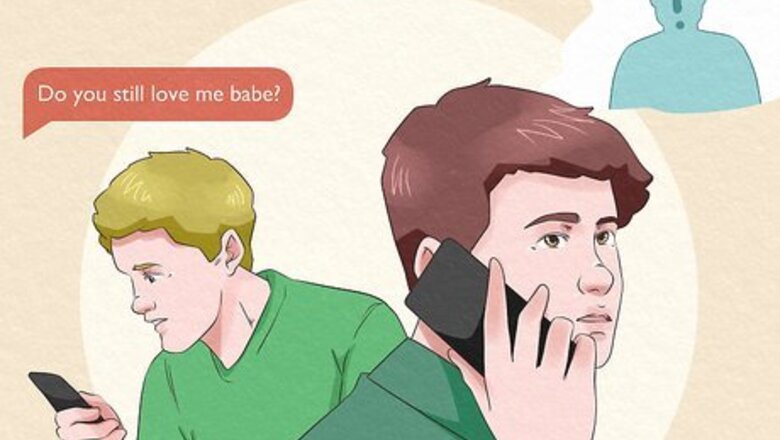
views
- An anxious-preoccupied attachment style causes a person to feel anxious within their relationships and may be caused by childhood neglect or past trauma.
- People who are anxiously attached often fear that they’ll be abandoned by the people close to them and suffer from low self-esteem due to not getting consistent affection as a child.
- Coping with a preoccupied attachment style involves practicing clear communication with others in the relationship and setting healthy boundaries.
What is a preoccupied attachment style?
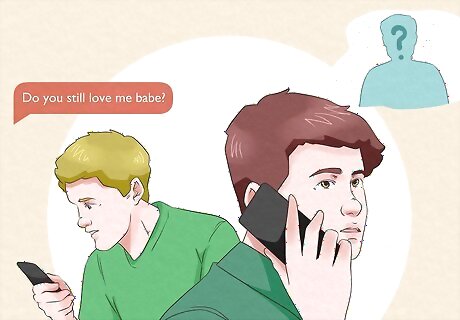
Preoccupied attachment causes a person to feel anxious within their relationships. Preoccupied or anxious-preoccupied attachment is one of 4 attachment styles and is called ambivalent attachment in infants and children. People with this type of attachment style are often characterized as having low self-esteem and a fear of being abandoned by others. Unfortunately, this attachment style is often caused by negative experiences a person has during their childhood or in other relationships. The other 3 attachment styles are: Secure attachment style: A secure attachment style is the ability of a person to form healthy, secure, and long-lasting relationships. This kind of attachment is usually the result of a person’s healthy relationship with their caregiver. Anxious-avoidant attachment style: Someone with an anxious-avoidant attachment style is often unwilling or unable to intimately connect with others on a physical or emotional basis. This attachment style is usually the result of a caregiver who didn’t provide emotional support. Disorganized attachment style: People with this type of attachment style often act unpredictably in their relationships and have a lot of difficulty trusting others. Unfortunately, traumatic and/or abusive childhoods are often the cause.
Traits of People with Preoccupied Attachment Styles

Fear of abandonment Many people who have an anxious-preoccupied attachment style are afraid that the people in their relationships will leave them or reject them. They may feel this kind of worry when it comes to friends, family, and romantic partners, and such fear can cause a person to become very clingy or even codependent with the people around them. At the same time, such fear and anxiety might also make a person less willing to trust others. If they fear they’re going to be abandoned in the future, they may be reluctant to get close to others. Unfortunately, anxiously attached people are at a higher risk of suffering from anxiety disorders and panic disorders due to these feelings of fear and anxiety.
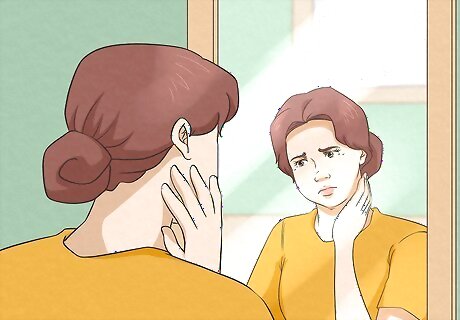
Low self-esteem People with an anxious-preoccupied attachment style often have a rather negative view of themselves. They may have a negative perception of their self-worth and tell themselves that they aren’t worthy of others’ care and love. This is often the unfortunate result of not being given the love or affection they desired during their childhood or in a past relationship.

Need for constant reassurance Due to low self-esteem and worry that the people close to them might leave them, someone with this type of attachment style might constantly seek out reassurance and validation from others. They might also seek out praise and recognition for their accomplishments to get attention from others. For example, a person with an anxious-preoccupied attachment style might constantly ask their romantic partner if they’re angry at them even if there’s no logical reason their partner would be angry.
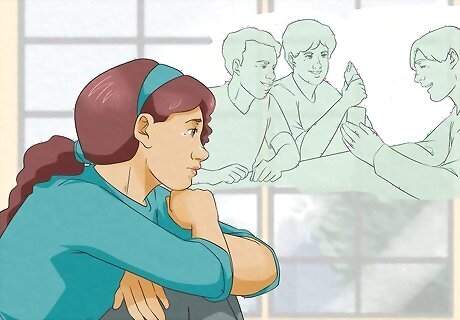
Over-dependence in relationships An anxiously attached person’s insecurity and low self-esteem can cause them to become overly dependent on their family, friends, or romantic partner. If they don’t feel confident in themselves, they may simply leave the decision-making up to other people and put their own wants and needs aside. Unfortunately, this can potentially lead to them becoming codependent. A person with an anxious-preoccupied attachment style who is also codependent might not have any interests outside of their partner’s and might have a hard time defining their sense of self.

Constant need to please others To ensure that the people in their life don’t leave them, someone with an anxious-preoccupied attachment style will often do whatever they can to please others and keep them happy. They’re also usually very sensitive to other people’s actions, moods, and needs, which can end up fueling their need to keep others content at the expense of their own needs. This tendency to prioritize others might also cause anxiously attached people to have difficulty setting boundaries and voicing their needs and opinions.
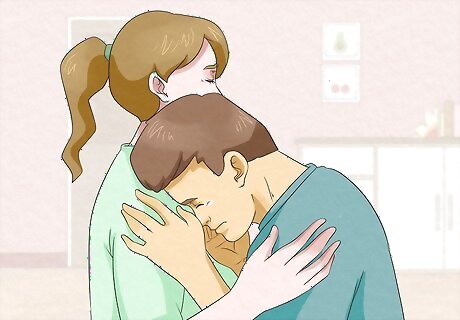
Impulsivity and volatile emotions A person’s anxious-preoccupied attachment style can cause them to act unpredictably and be moody at times. In many cases, people with this type of attachment desire attention but don’t know how to pursue it in a healthy way, which can cause them to fluctuate quickly between moods. They might also have difficulty controlling their impulses and may lash out at others without much warning. For example, an anxiously attached person might desire a relationship, but then they might get angry at their partner for not living up to their expectations about how they should be cared for. They might seek comfort from others in indirect ways, such as crying, instead of directly telling someone they need help or support. Anxiously attached people also tend to be more sensitive to other people’s judgment and criticism, even when it’s given in a constructive or positive way.
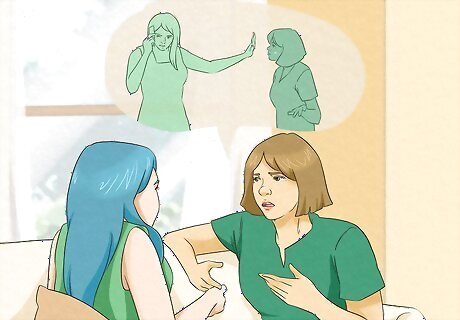
Tendency to interpret situations negatively Some anxiously attached people may instinctively expect the very worst to come out of situations, so they may end up interpreting even positive or neutral situations as negative. They may view things as threats even when there’s no logical reason for them to feel threatened. Anxiously attached people tend to overthink and overanalyze their interactions with others. For example, someone with an anxious-preoccupied attachment style might go over a conversation they had with their friend days after it happened because they’re afraid they might have said something to upset the other person.
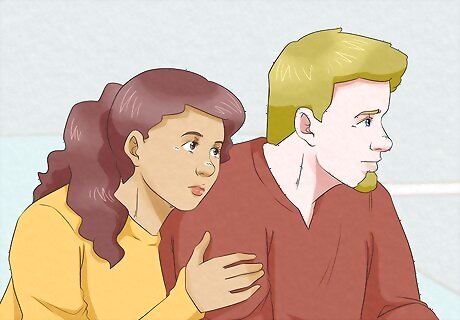
Ambivalence toward intimacy The conflicting emotions an anxiously attached person feels toward intimacy can cause them to feel ambivalent about the subject altogether. On the one hand, they may crave affection and intimacy with their partner, but they may also feel reluctant about appearing vulnerable and letting themselves trust the other person. People with preoccupied attachment styles might also feel anxious when faced with developments in a romantic relationship that require more commitment, such as moving in together or getting married.
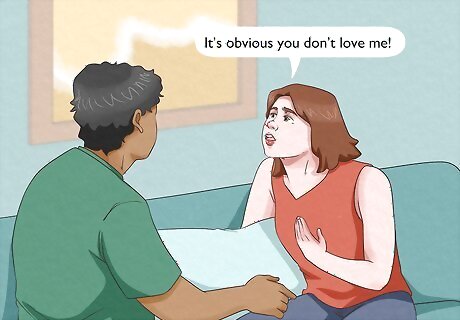
Conflicts within relationships Conflicts can arise due to an anxiously attached person’s insecurity, negativity, and hypersensitivity. However, a person with an anxious-preoccupied attachment style might purposefully provoke their partner and try to prolong the argument to get the response they want, such as sympathy or reassurance. Anxiously attached people may also resort to using guilt or blame to get their partner to sympathize with them and give them reassurance. For example, they might say something like, “It’s obvious you don’t love me” to get their partner to feel guilty.
Causes of Preoccupied Attachment
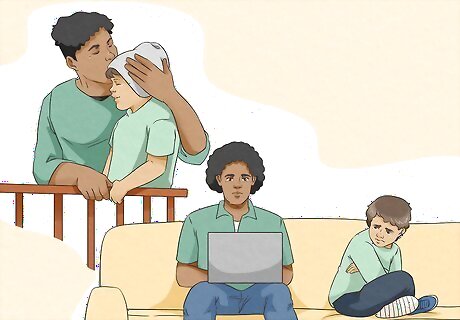
Inconsistent parenting style One common cause of a person’s anxious-preoccupied attachment is a parent that was inconsistent with giving affection. A parent might have been doting and affectionate one day, then distant and unavailable the next. Unfortunately, this can cause a person to be distrustful of others since they learned from an early age that they might not always get the care they need. Such inconsistency can also cause a person to develop a fear of being abandoned. Babies who have an anxious attachment style usually aren’t easily soothed by their caregiver since they’ve learned that their caregiver won’t always be there to give them the attention they need.
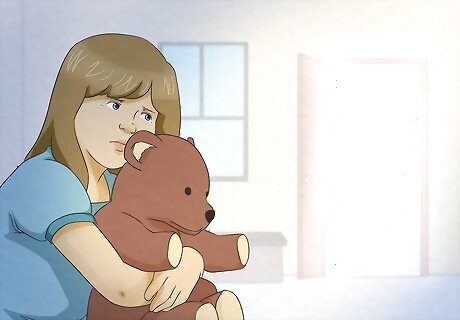
Neglect Unfortunately, children who are neglected by their caregivers may develop an anxious attachment style. Neglect may cause them to become more demanding and clingy with people, but it can also cause them to develop low self-esteem and think that they’re not deserving of love.
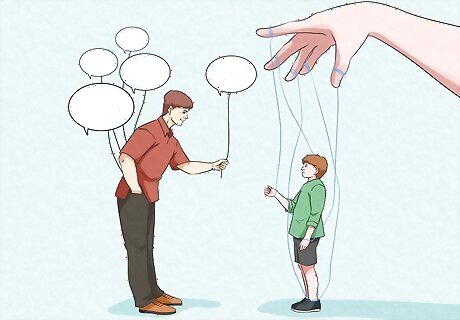
Overparenting Parents who are very controlling of their children’s lives can cause their children to develop low self-esteem. Because of these negative feelings, children of overbearing parents often worry that their parents don’t care about them enough and tend to seek reassurance and validation. A child’s lack of independence in such an environment may also lead to them being overly dependent on the people in their future relationships.

“Emotionally hungry” caregiver Caregivers that are “emotionally hungry” often only seek emotional or physical closeness with their child in order to satisfy their own needs. This can lead to them neglecting their child’s needs, even if they look like they’re very attentive and caring on the outside. As a result, children can feel very anxious and end up forming a preoccupied attachment style. They also may not know how to set boundaries in future relationships if their caregiver was particularly controlling of them.
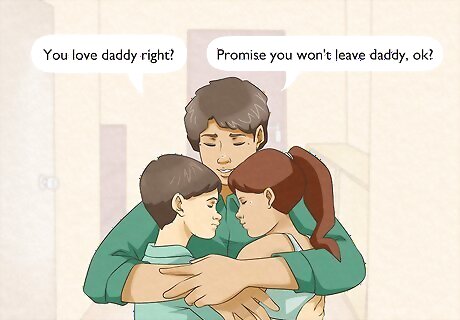
Anxious-preoccupied caregiver Attachment styles and their side effects can be passed down from caregiver to child. If someone grew up in a household where their caregiver was very anxious, clingy, and emotionally unpredictable, they may also develop a similar attachment style that will manifest in future relationships.
Coping with a Preoccupied Attachment Style

Practice mindfulness and self-reflect on your emotions. Anxious-preoccupied attachment brings about a ton of conflicting and confusing emotions. Instead of repressing these emotions or ignoring them, acknowledge them for what they are and be mindful of what emotions you feel during certain situations. Keep a journal where you can write down all of your thoughts and feelings. Then, reread your entries to self-reflect on your experience and see what you can learn from them. When you feel yourself becoming overwhelmed by strong emotions, ask yourself, “Is there a logical reason for me to feel like this? What exactly is causing these emotions?”

Pursue hobbies to healthily externalize your emotions. Keeping all of these anxious and stressful feelings inside can take a toll on you mentally and physically. Therefore it’s important to find an outlet where you can healthily release these emotions. Finding a new hobby or dedicating time to a current hobby is a great way to healthily distract yourself from these anxious thoughts and soothe yourself when things become overwhelming. Use relaxing techniques to keep yourself calm when things get overwhelming. Meditate, go for a walk, or sit and read a good book when you feel anxious.
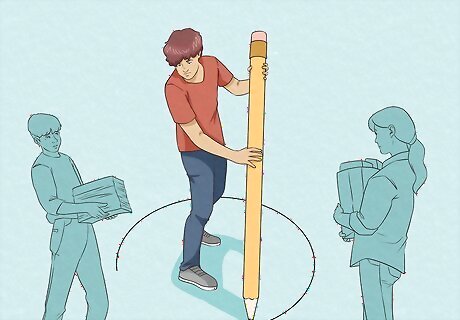
Practice clear and direct communication. If you notice that you tend to prioritize others’ needs before your own, developing good communication skills is important to becoming a more assertive person. Practice giving your honest opinions when people ask for your input and establish healthy boundaries with friends, family, and your partner about what you do and don’t want. Setting boundaries can be difficult at first, so one tip is to start by saying no to and making authoritative decisions on small things. For example, be sure to give your input when deciding on where to eat, what to do over the weekend, or what show to watch on TV.
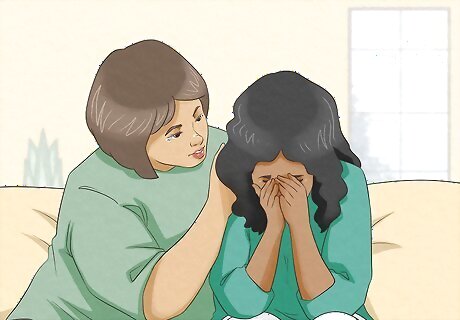
Allow yourself to be vulnerable with others. It can definitely be scary to open up to people, but it can bring you closer to them and connect you on a deeper level. Before delving into your own story, it might help to ask others questions and get them to talk about themselves. It might be comforting to see others be willing to be vulnerable. Then, start sharing small things about yourself until you become more comfortable. Use “I” statements to help put your thoughts and feelings into words. Talking in the first person also makes your statements more personal. For example, instead of saying, “People can be so frustrating,” say something like, “I feel frustrated when people don’t acknowledge my hard work.”

Use positive language to talk to yourself. Instead of focusing on the negatives, use positive self-talk to point out your strengths and remind yourself what you’re doing well. It’s okay to struggle every now and then, but just remember that you’re a strong and capable person. Use positive affirmations to boost your self-esteem and do your best to push away any negative thoughts when they come to mind. Tell yourself things like, “I am loved,” “I am worthy of love,” and “I am a strong person.”
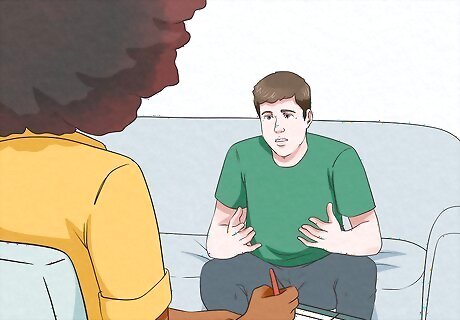
Talk to a therapist. If you find yourself struggling with your anxious-preoccupied attachment style or feel like you need more support from a professional, talk to a therapist to gain a new perspective. They may be able to help you find healthy ways to cope with any anxious thoughts you have and will be there to listen to whatever you have to say. Use a service like BetterHelp to find a licensed therapist near you and get to talking whenever it’s convenient for you.
Helping Someone with a Preoccupied Attachment Style
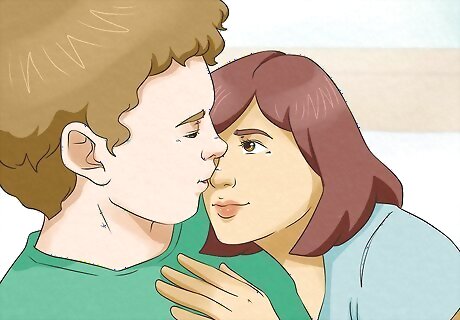
Express your gratitude toward them. Someone with an anxious-preoccupied attachment style may be suffering from low self-esteem, so doing things to show that you appreciate them can help them feel more confident. Compliment them whenever you can and point out what they did well, what you like about them, and why they mean so much to you. If you’re in a romantic relationship, saying “I love you” can go a long way in making them feel cherished.
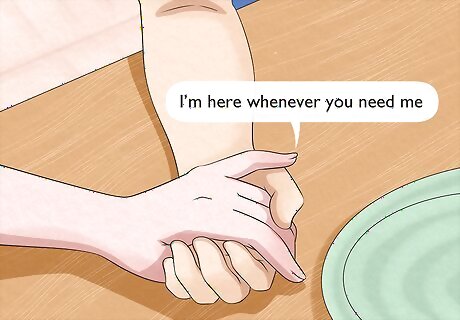
Reassure them that you’re not going to leave them. Oftentimes, a major source of anxiety for a person with a preoccupied attachment style is their fear that they’ll be abandoned by the people close to them. In order to prove that they have nothing to worry about, create habits that leave them feeling secure and reassured. For example, if you’re going somewhere without them, text them when you arrive and when you’re on the way back home. If you’re in a romantic relationship, tell them “I love you” before you have to leave to reassure them that your relationship is still more than okay. Tell them things like, “I’m here whenever you need me,” and, “You know you can always talk to me, right?” to let them you’re there for them.

Soothe them with physical touch. When you notice someone becoming anxious or overwhelmed, comforting them through physical touch can be very helpful for some. A hug, kiss, or even just a pat on the shoulder may help reassure them that you’re there for them and not going anywhere.
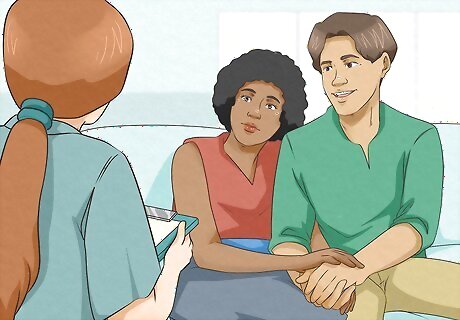
Consider couples counseling if you’re in a relationship. Attending couples counseling can help you learn more about your partner’s attachment style and provide you with information about how to best help them. Counseling also provides a safe place where you and your partner can openly communicate with one another with the help of a professional. A service such as BetterHelp can help you find a licensed therapist near you.














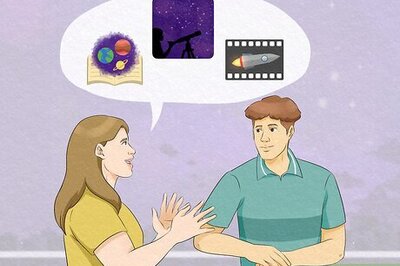

Comments
0 comment